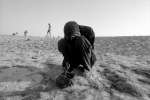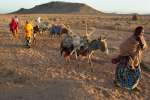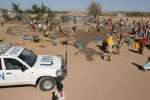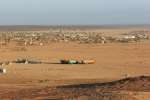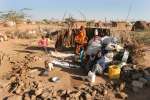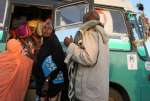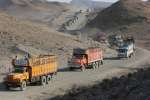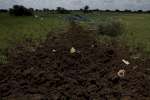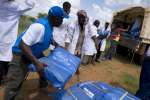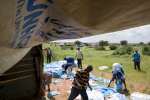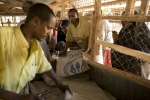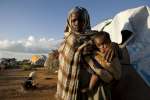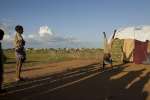- Text size
 |
|  |
|  |
| 
- Français
116 Somali refugees from Kenya land in Mogadishu, spearheading new phase of voluntary repatriation
Press Releases, 5 August 2015
Mogadishu, 5 August 2015
The arrival at Mogadishu International Airport today of 116 Somali refugees from Kenya marks a new chapter in the voluntary return process. Earlier in the morning, the two planes took off from Dadaab in Northeastern Kenya, the largest refugee settlement in the world, still hosting 333,000 Somali refugees. This is the result of efforts by the Tripartite Commission formed by UNHCR and the Governments of Kenya and Somalia, to step up support for voluntary repatriation of Somali refugees.
The Commission met on 29 July and agreed to scale up assistance to Somali refugees in Kenya wishing to return home and agreed on a strategy that envisages the voluntary repatriation of some 425,000 Somali refugees over a five year period.
Despite the fragile security environment situation in Somalia, refugees have started to return. In response to signs of increasing stability in Somalia, between December 2014 and early August, 2,969 Somali refugees have returned to the districts of Luuq, Baidoa and Kismayo, with UNHCR support as part of the pilot phase. More still have returned spontaneously without receiving assistance from UNHCR. Under the current agreement assistance will be provided to returnees to any area of Somaliland, Puntland and South Central Somalia. UNHCR support includes standardized financial and in-kind assistance to ensure safe and dignified return, as well as longer-term support to help returnees reintegrate in areas they once fled from. The majority of the returns from Kenya to Somalia will continue to take place by road as has been the case during the pilot phase, and only for people with specific protection needs will UNHCR facilitate airlifts.
Comprehensive development efforts are planned for nine districts in South Central regions – namely Mogadishu, Afgoye, Jowhar, Balcad, WanlaWeyn and Belet Weyne as well as Luuq, Baidoa and Kismayo. Development efforts in these areas aim to strengthen access to employment opportunities as well as health, education and other public services to anchor returns in Somalia.
UNHCR together with the two governments involved will strengthen efforts to rally international support for comprehensive and community-based interventions to support the refugees and their communities. A portfolio of humanitarian and development projects is being designed with the aim of creating a solid foundation for strengthening the resilience of the refugee and host communities in Kenya, preparing refugees for durable solutions, and creating conditions in Somalia that are conducive to meaningful and sustainable reintegration. The portfolio of projects will be presented at a Pledging Conference that will take place later this year.
The Tripartite Commission was established following the signing of the Tripartite Agreement between the Government of the Republic of Kenya, the Government of the Federal Republic of Somalia, and UNHCR, in November 2013 to govern the safe, dignified and voluntary repatriation of Somali refugees from Kenya. Following more than two decades of instability in Somalia compounded by consequences of recurring natural hazards, urgent solutions are needed for the 1.1 million internally displaced Somalis as well as the more than 900,000 Somali refugees hosted in the region, half of whom reside in Kenya.
For more information, please contact:
- In Dadaab: Assadullah Nasrullah on mobile +254 705 840 030
- In Nairobi: Emmanuel Nyabera on mobile: +254 733 995 975
- For Somalia: Alexandra Strand Holm on mobile +254 733 121 147
- In Geneva: Karin de Gruijl on mobile + 41 79 255 9213











